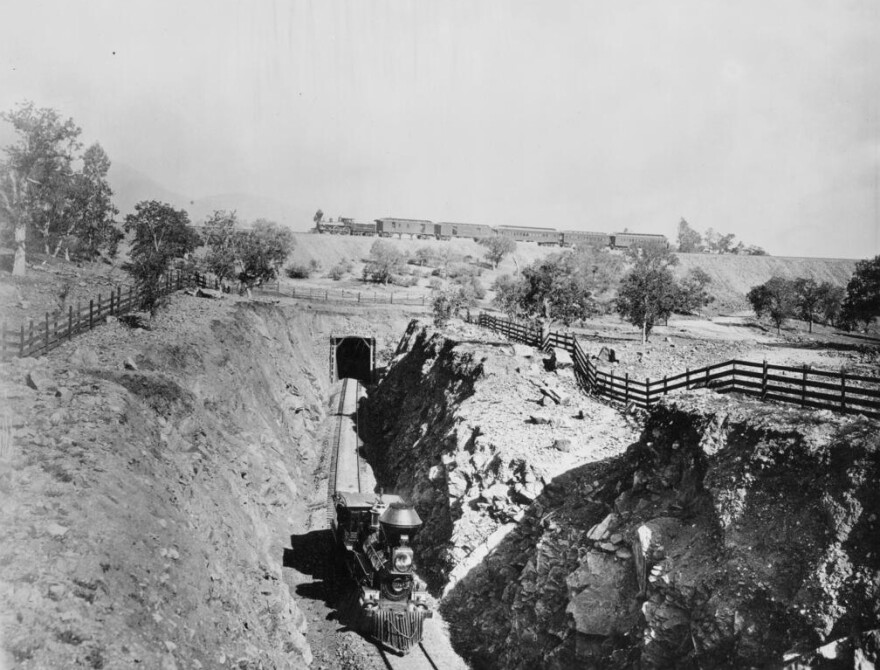It's one of California's most significant engineering marvels. And even after 150 years, it's still a critical piece of infrastructure that keeps the economy. The story of the Tehachapi Loop - today on KVPR's Central Valley Roots.
Early railroad engineers had a problem: How to connect the Central Valley with Los Angeles. Trains don’t tolerate steep mountain grades. In the mid-1800s surveyors looked for routes, including Tejon Pass, but the Tejon route was considered too challenging. So in 1874, when the Southern Pacific reached Bakersfield, work began on a different route – building tracks over Tehachapi Pass. At around 4,000 feet, it’s a steep climb, but one made possible through an engineering innovation – the famous Tehachapi Loop.
3,000 Chinese workers built 28 miles of track, including 18 tunnels and 10 bridges. The centerpiece of the project is engineer William Hood’s design that has the track looping over itself in a helix, with a tunnel. Trains that are long enough often have their engines cross over the end of the train, all while ascending the mountain at a 2.2 percent grade. It’s considered one of America’s civil engineering landmarks.
It opened in 1876 and has been in use ever since. And it’s actually shared by two corporate rivals. In 1899, the Southern Pacific struck a deal with the Santa Fe allowing them to use the line, rather than building their own route. The deal is still in place today with their successor companies. Yet the single-track layout and the massive amount of freight traffic on the loop is also the reason there’s no passenger rail service between Bakersfield and LA.




